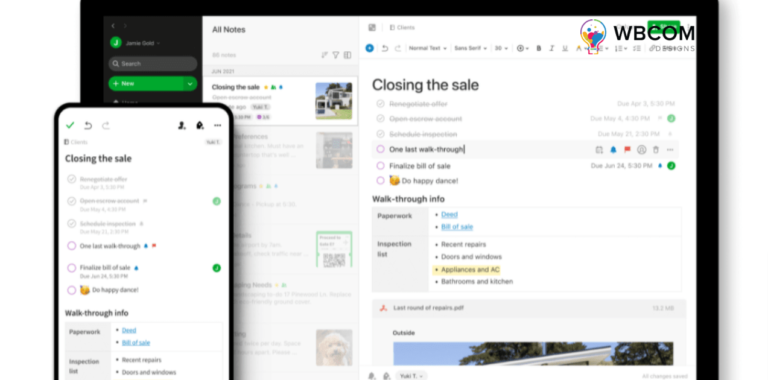In the rapidly evolving landscape of education, online courses have become a prominent avenue for learning. While the flexibility and accessibility of online education are undeniable advantages, the potential for a sense of isolation among students is a challenge that educators must address. One effective solution to counter this isolation is implementing community-building initiatives within online courses. This article explores the importance of community in online learning and provides practical strategies to foster student interaction and Building Student Engagement.

Table of Contents
ToggleImportance of Community Building Student Engagement
1. Social Connection Enhances Learning
Human beings are naturally social creatures, and the process of learning is frequently amplified through social interactions. In the absence of a sense of community in online courses, students may experience disengagement and diminished motivation. Establishing a supportive learning community provides students with a platform to connect, collaborate, and exchange experiences, thereby significantly enhancing the overall educational experience.
2. Increased Motivation and Accountability
A robust community fosters a collective dedication to academic success, encouraging students to maintain motivation and take responsibility for their learning outcomes. When students feel connected to their peers, they are more inclined to actively participate, meet assignment deadlines, and aspire to achieve higher academic goals through the accountability established within the community framework.
3. Diversity of Perspectives
Online courses draw a diverse student body from various geographical locations and backgrounds. A lively community facilitates the exchange of diverse perspectives and ideas, enriching the learning experience for all participants. Exposure to a variety of viewpoints nurtures critical thinking skills and contributes to a more comprehensive understanding of the subject matter.
Strategies for Fostering In Building Student Engagement
Fostering student interaction is crucial for creating an engaging and collaborative learning environment.
Here are several strategies that educators can use to promote interaction among students:
1. Icebreaker Activities
At the outset of a new course, incorporating icebreaker activities is a valuable strategy to cultivate a positive and inclusive learning atmosphere. Simple introductions allow students to share their names, academic interests, and perhaps a fun fact about themselves. This initial exchange establishes a sense of familiarity and sets the stage for a collaborative environment. Additionally, activities like sharing interesting facts add an element of personal connection among students, fostering a more relaxed and engaging atmosphere. Team-building exercises, whether they involve problem-solving or collaborative challenges, encourage students to work together from the outset, promoting cooperation and communication skills. By prioritizing these icebreaker activities, educators lay the foundation for a supportive classroom community where students feel comfortable interacting and learning from one another.
2. Group Projects
Implementing group projects that necessitate collaboration and teamwork is an effective way to enhance students’ interpersonal skills and foster a cooperative learning environment. To maximize the benefits, educators should deliberately encourage diverse group compositions. By intentionally mixing students with varied backgrounds, experiences, and perspectives, instructors create a dynamic setting that prompts meaningful interactions. This diversity not only enriches the learning experience but also challenges students to consider different viewpoints and problem-solving approaches. Collaborating in diverse groups fosters a sense of inclusivity and prepares students for real-world scenarios where working with individuals from diverse backgrounds is commonplace. Through these group projects, students develop subject-specific knowledge and cultivate essential teamwork, communication, and adaptability skills crucial for their academic and professional journeys.
3. Online Discussion Forums
Establishing online discussion forums is a powerful strategy to encourage student engagement and create a virtual space for collaborative learning. These forums serve as platforms for students to discuss course topics, ask questions, and share their insights outside the confines of traditional classrooms. To stimulate critical thinking and foster meaningful conversations, instructors should pose open-ended questions that prompt thoughtful responses. These questions should encourage students to analyze, synthesize, and apply their knowledge rather than eliciting simple yes or no answers. By facilitating discussions through open-ended questions, educators promote a deeper understanding of the subject matter and cultivate a community of learners who actively contribute to one another’s intellectual growth. The online discussion forums thus become not just a tool for communication but a dynamic hub for the exchange of diverse perspectives and the development of critical thinking skills.
4. Peer Review Assignments
Integrating peer review assignments into the curriculum is a valuable strategy to promote student interaction while simultaneously developing critical thinking and communication skills. By having students provide feedback on each other’s work, they engage in a process that goes beyond passive learning. Peer reviews encourage students to critically assess and analyze their peers’ ideas, arguments, or projects, fostering a deeper understanding of the subject. This practice not only enhances their ability to constructively evaluate others’ work but also cultivates effective communication skills as they articulate their thoughts and suggestions. Moreover, the collaborative nature of peer review assignments contributes to a sense of community within the class, as students learn from one another and collectively strive for academic excellence. Overall, incorporating peer review assignments serves as a multifaceted approach to learning, emphasizing both content mastery and the development of crucial analytical and interpersonal skills.
5. Collaborative Tools
Leveraging collaborative tools like Google Docs, Microsoft Teams, or Slack is an excellent way to enhance group work and facilitate real-time collaboration among students, regardless of their physical location. These platforms provide a virtual space where students can co-create documents, share ideas, and work together seamlessly. Google Docs, for instance, allows simultaneous editing and commenting, fostering a dynamic and interactive environment. Microsoft Teams and Slack offer features like channels and threads that enable organized communication and collaboration within specific topics or projects. By utilizing these tools, educators empower students to collaborate efficiently, promoting effective teamwork and communication skills. Additionally, the accessibility of collaborative platforms ensures that students can contribute to group projects at their own pace, accommodating diverse schedules and learning preferences.
6. Classroom Polls and Surveys
Integrating polls and surveys into lectures is a dynamic strategy to gauge student opinions, enhance engagement, and encourage active participation. Educators can utilize dedicated polling tools like Mentimeter, Poll Everywhere, or Kahoot!, or take advantage of built-in features within learning management systems (LMS) such as Canvas, Moodle, or Blackboard. By posing relevant questions related to the lecture content, instructors not only capture the pulse of the class but also prompt students to reflect on and articulate their thoughts. The real-time nature of these tools allows for immediate feedback, creating an interactive and responsive learning environment. Moreover, incorporating polls and surveys into lectures provides instructors with valuable insights into students’ comprehension, allowing for timely adjustments to teaching methods or clarifications on challenging topics.
7. Think-Pair-Share
The Think-Pair-Share (TPS) strategy is a cooperative learning technique designed to engage students in active thinking and discussion.
The process involves three main steps:
Think
- Initially, students are given a prompt, question, or topic to consider individually.
- They take a few moments to think about their ideas, opinions, or responses.
Pair
- After the thinking phase, students pair up with a nearby classmate to discuss their thoughts.
- This peer discussion allows them to share their perspectives, clarify ideas, and potentially gain new insights.
Share
- Finally, pairs or individual students share their insights with the entire class.
- This phase encourages participation, as students have already formulated their thoughts and had a chance to discuss them with a peer.
8. Role-playing and Simulations
Incorporating role-playing activities or simulations into the learning environment is a dynamic strategy that adds an interactive dimension to education, particularly in subjects where real-world scenarios and decision-making are pertinent. By immersing students in simulated situations, whether as characters in historical events or participants in business scenarios, this approach encourages active engagement and practical application of knowledge. Role-playing fosters critical thinking as students navigate challenges, make decisions, and experience the consequences of their actions within a controlled environment. This hands-on, experiential learning method not only enhances subject understanding but also develops problem-solving skills, teamwork, and adaptability. Moreover, it provides a bridge between theoretical concepts and their practical implications, preparing students for the complexities of the professional world by allowing them to explore and apply their learning in context.
9. Jigsaw Technique
The Jigsaw technique is a cooperative learning strategy that promotes collaboration and active participation among students. In this method, each student becomes an “expert” in a specific topic or aspect of the material. After acquiring in-depth knowledge on their assigned topic, students then join groups consisting of peers who have become experts in different areas. Within these groups, each student takes on the role of a teacher, sharing their expertise with their peers while learning from others in return. This approach ensures that every student contributes to the collective knowledge of the group. The Jigsaw technique not only fosters collaboration but also enhances communication skills, as students must effectively convey complex information to their peers. By creating a sense of interdependence, this strategy encourages teamwork and a deeper understanding of the overall subject matter, making learning a more interactive and shared experience.
10. Online Webinars or Guest Speakers
Organizing online webinars or inviting guest speakers is an effective strategy to bring real-world expertise into the virtual classroom. Guest speakers can provide valuable insights, industry perspectives, and practical experiences that enrich the learning environment. Following the presentation, it’s essential to facilitate discussions or Q&A sessions to encourage student interaction. This engagement allows students to delve deeper into the topic, seek clarification, and actively participate in a dialogue with the expert. Moreover, these sessions provide an opportunity for students to connect theoretical knowledge with practical applications, fostering a more comprehensive understanding of the subject matter. By incorporating such interactive elements, educators create a dynamic learning experience that goes beyond traditional lectures and cultivates a sense of curiosity and engagement among students.
Final Thought On the Power of Community In Building Student Engagement
In the realm of online education, recognizing and harnessing the power of community is paramount to building lasting student engagement. Beyond the digital divide, a vibrant and supportive community can bridge the gap between virtual spaces and create a shared learning experience. Through collaborative tools, discussion forums, and interactive activities, educators can cultivate a sense of belonging that transcends the physical distance between students. The synergy of a strong online community not only enhances the learning journey but also fosters a supportive network where students feel connected, valued, and inspired. In an era of digital education, understanding the significance of community-building becomes not just a strategy but a cornerstone for creating meaningful and enduring online learning environments.
Interesting Reads:
The Importance of Community Building







